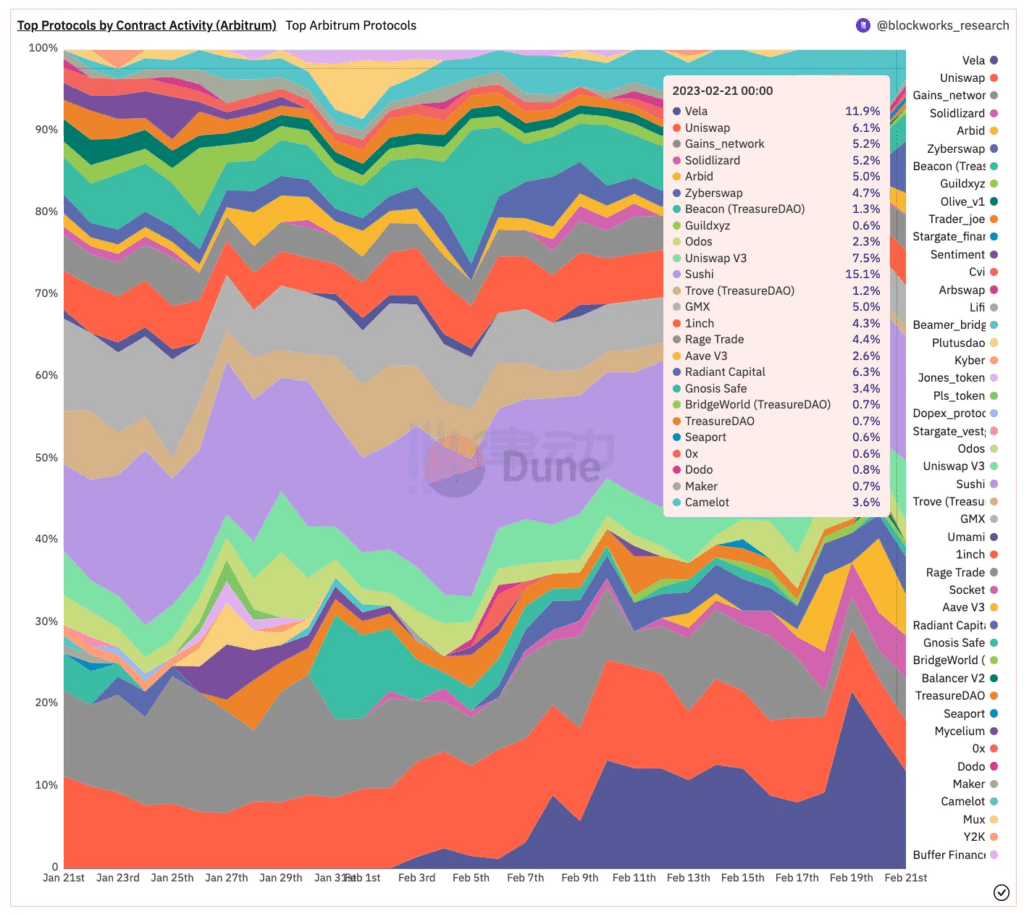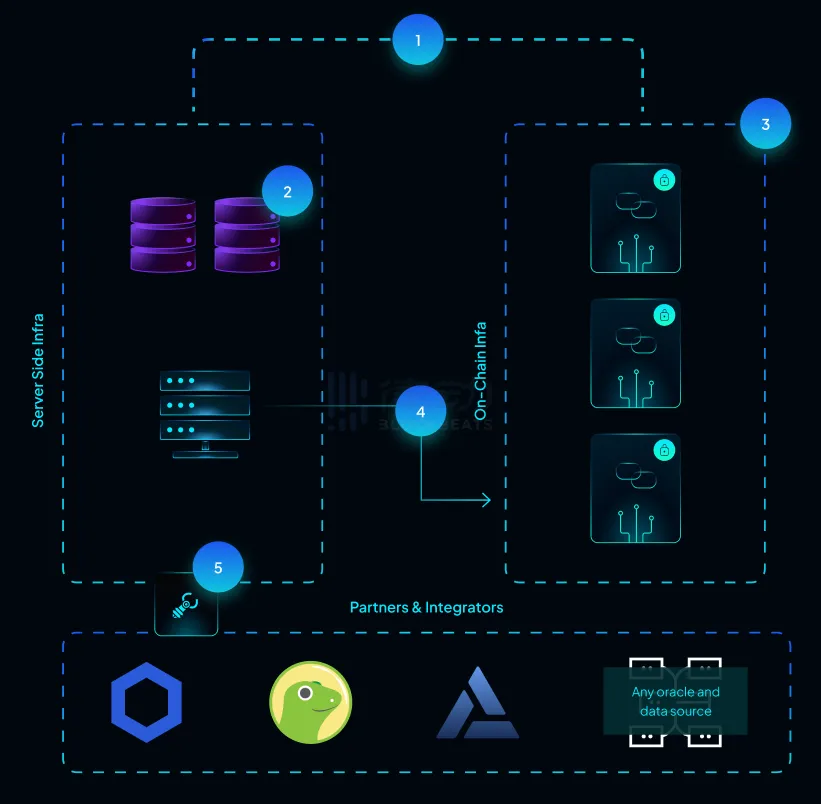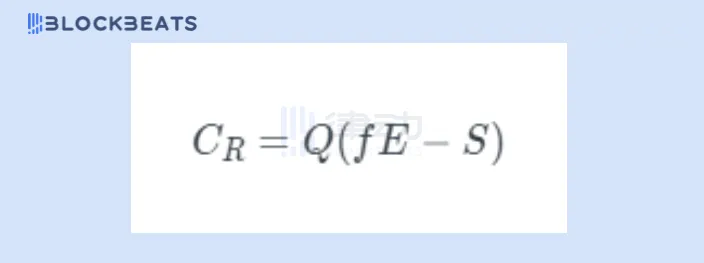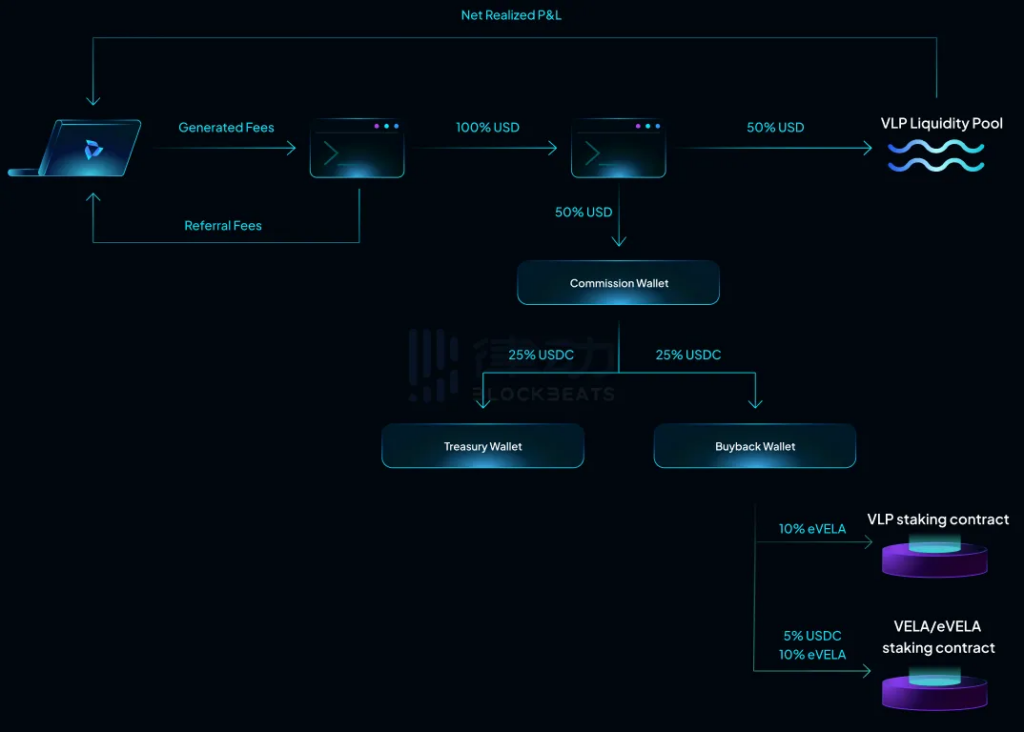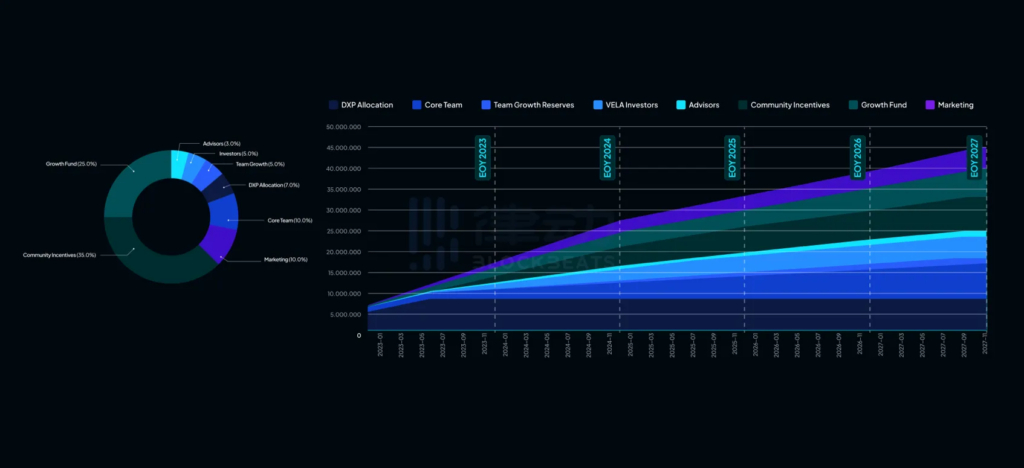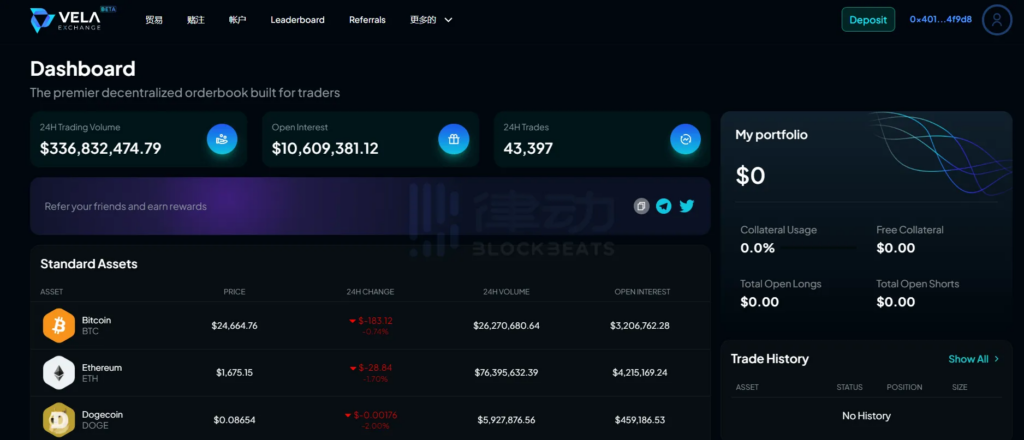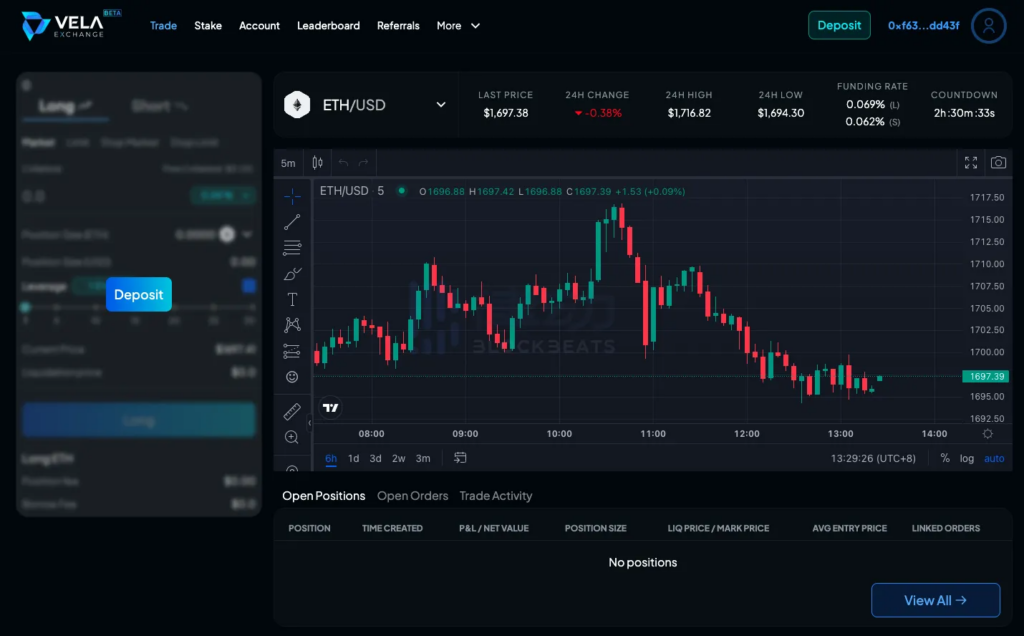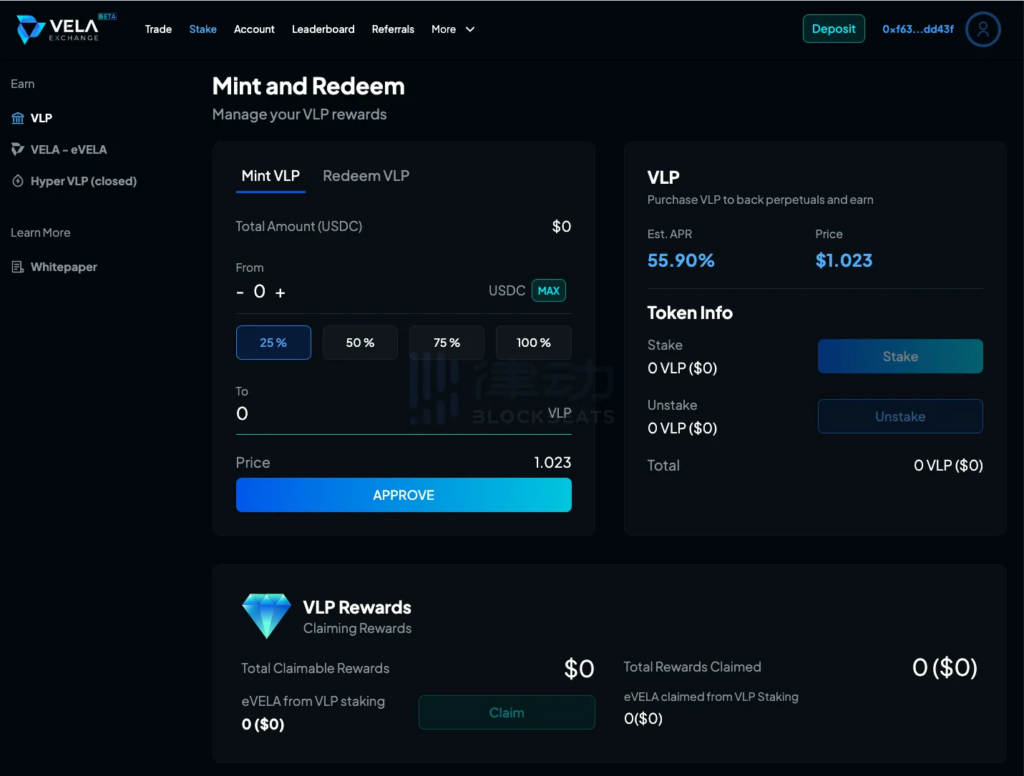What’s Attractive About Vela Exchange To Surprise The Community?
2
0
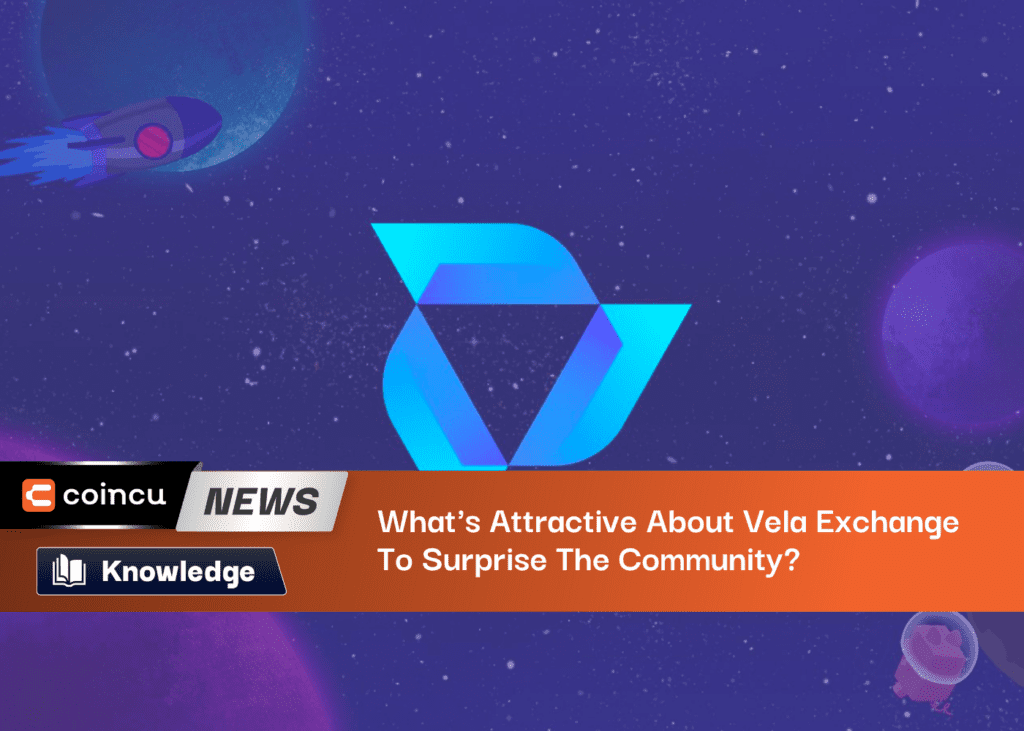
Key Points:
- Vela Exchange has recently received a lot of attention in many crypto communities.
- Vela uses collateral and leverage to determine the amount of collateral and leverage that can be selected.
- Vela contracts have been fully audited, but users still face some potential risks.
Due to the recent airdrop expectations, the Arbitrum ecosystem’s perpetual contract agreement, Vela Exchange, has received a lot of attention in many crypto communities.
According to Dune Analytics data, Vela’s contract interaction activity has skyrocketed, far surpassing Uniswap, and the transaction volume has also grown rapidly. The transaction volume in the past 24 hours reached $341 million. In comparison, the transaction volume of Arbitrum’s leading DeFi GMX in the same period was only $111 million, which also includes its traffic in the Avalanche ecosystem.
This article will sort out the basic structure and operating mechanism of Vela Exchange, its characteristics different from protocols such as GMX, and its simple interaction process.
Mechanism Introduction
Vela Exchange is a decentralized perpetual contract platform that aims to improve the transaction speed and security of DeFi derivatives by using the hybrid mode of the off-chain order book and on-chain settlement. According to official documents, Vela users can build positions based on the performance of synthetic assets with leverage up to 100 times. Vela Exchange’s reward structure is carefully balanced to manage token and reward supply while maintaining high incentives for liquidity supply and trading.
Basic structure
The infrastructure of Vela Exchange consists of 4 main parts:
- The off-chain server caches specific on-chain data to improve performance, such as historical transaction data, notifications, configuration file data, language settings, etc.
- The on-chain protocol has all open funds, collateral, VLP/Vela staking functions, and position management triggers.
- The server is hosted on the server to improve performance and pushed to the chain when conditions are met.
- The data portal exposes APIs to third parties and extracts data from oracle machines and data providers.
All asset prices are fully operated and maintained by the Vela team through a proprietary price feed service called Vela Stream and are designed to ensure performance, security, and flexibility. The platform currently pulls data directly from several CEXs and on-chain sources into a proprietary Vela Exchange price feed. Vela Stream’s price feed is published on-chain and is transparent to each tradable asset, and reflects a single aggregated price from the top CEXs in the ecosystem.
In order to be able to perform trigger funding, fund management, liquidation, and delayed transactions (to reduce front-running transactions), Vela Exchange has role permission access to destroy or mint USD stablecoins in the agreement, but such stablecoins are not transferable and tradable. In emergencies such as agreement updates and contract changes, Vela administrators have the right to suspend key contract functions on the agreement except for withdrawals.
Transaction mechanism
Vela uses collateral and leverage to define the amount of collateral and the level of leverage that can be selected. For example, if a user chooses a leverage level of 10x and collateral of $500, the fund size for the purchase is $5,000. In terms of trading assets, Vela provides three types of assets: cryptocurrency, foreign exchange, and market value.
The design of Vela’s liquidation mechanism is quite innovative. The price at which price liquidation occurs is the asset quantity [Q], average entry price [E], collateral [C], liquidation plus financing fees [F], and a slippage risk factor [f] (1% for non-foreign exchange assets, 0.3% for foreign exchange assets), this factor accounts for a built-in safety net to protect the protocol from losses exceeding the collateral. The formulas for position liquidation allowance A and liquidation price L are:
If liquidated, the trader will get back some of the collateral based on the slippage [S], which represents the difference between the actual liquidation price and the actual liquidation price. The collateral returned to the trader is:
As an example, assume a BTC/USD long trade with $1,000 of collateral has a volume of 1.25 BTC, an average entry price of 16,000, a total closing fee of $20, and a corresponding liquidation price of 15,376. The fund was not forced closed until the price of 15,350 due to the rapid price drop around the liquidation price, resulting in a slippage of 26.00. In this case, the protocol will return a total of $167.50 to the trader. Vela’s VLP Vault can withstand up to fE=160.00 slippage without loss.
In addition to the Vela team’s liquidation wallet, anyone can also trigger liquidation, but currently, 100% of the liquidation fee belongs to VLP’s LP as a reward for providing liquidity. Additionally, Vela establishes long and short open interest (OI) limits, which are designed to protect the protocol from total OI exceeding TVL (in this case, VLP-backed liquidity). For each tradable asset, these limits are based on user and asset-level TVL percentages. These rates may change in the future as the risk profile varies from asset to asset.
Fee mechanism
When trading on Vela, you need to pay two transaction fees: a holding fee and a funding fee. The holding fee includes that when opening and closing a position, the maximum fee that users need to pay for non-foreign exchange assets is 0.1% of the opening funds, and the maximum fee that users need to pay for foreign exchange assets is 0.01% of the holding funds. The funding fee includes interest accrual based on how much money is borrowed from the vault and the current funding rate when the position is opened. The longer funds remain open, the higher the funding fee, payable when a position is closed.
Tokenomis
VELA & esVELA
Vela’s native Token is VELA (see the figure below for the initial allocation and unlocking cycle), and the staking certificate esVELA can be obtained after staking. esVELA will continue to unlock the same amount of VELA during the 6-month linear staking period. The esVELA used for staking cannot be used to obtain staking rewards. Claiming any amount of VELA or adding a new esVELA to the staking contract will reset the staking period. All staked esVELA rewards are provided by VELA’s buyback model.
VLP
VLP is the LP Token of the Vela protocol, which is used to provide incentives for Token holders and stakers. VLP is based on USDC stake, and USDC can be redeemed at any time. Anyone can mortgage USDC to mint VLP and earn fees based on the transaction volume generated on the platform.
VLPs also provide liquidity to traders, allowing them to take leveraged positions. If the trader loses, the VLP holder gains, and if the trader makes a profit, the VLP holder loses. While VLP value is market neutral and not directly affected by crypto market volatility, there are still risks associated with holding VLPs. To bear these risks, VLP stakers can earn up to 60% of platform fees generated from trading activity.
Interaction process
Visit Vela Exchange’s official website and connect to the wallet, where you can view your portfolio, standard assets, transaction history, navigation menu and social links, use the deposit button to deposit some USDC, and then start trading on the platform, The operation of staking and claiming rewards.
After jumping to the “trade” tab, the options are: first select the trading pair, go long and short, set collateral (minimum 5$), and select leverage (Crypto up to 30 times, other assets up to 100 times). After the parameter selection is completed, the position can be opened.
After jumping to the Stake page, VRP can be minted or redeemed on the VLP tab. Stake to earn VLP rewards or unstake when needed. On the Vela – eVela tab, Vela can be purchased, Stake/Unstake for extra rewards.
Although the Vela contract has been fully audited, users still face some potential risks. Such as counterparty risk, if the trader makes a profit, the profit will be paid to the trader from the VLP pool. There is also the risk of decoupling. If USDC decoupling occurs, VLP will be directly affected. In addition, the available positions of the perpetual contract are limited by the total amount of USDC available in the VLP. If the platform’s positions reach or exceed the total TVL of the VLP, traders cannot open new positions.
DISCLAIMER: The Information on this website is provided as general market commentary and does not constitute investment advice. We encourage you to do your own research before investing.
Join us to keep track of news: https://linktr.ee/coincu
Harold
Coincu News
2
0
 Manage all your crypto, NFT and DeFi from one place
Manage all your crypto, NFT and DeFi from one placeSecurely connect the portfolio you’re using to start.


